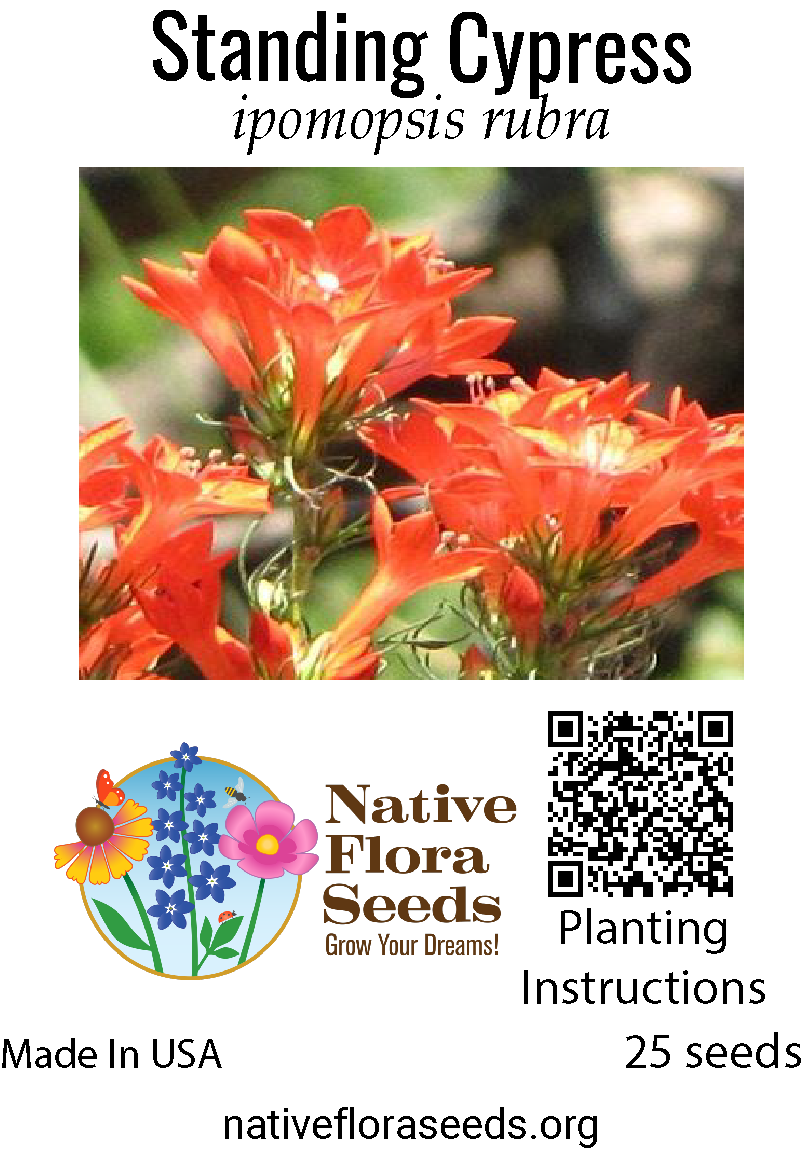Imomopsis rubra
Planting Instructions
Here's a guide to planting Ipomopsis rubra (also known as Scarlet Gilia or Standing Cypress) seeds in the USA:
Site Selection
Sunlight: Ipomopsis rubra thrives in full sun, needing at least 6 hours of direct sunlight daily.
Soil: It prefers well-drained, dry to medium moisture soil. Sandy or rocky soils are ideal. It's crucial to avoid waterlogged conditions, as this can lead to root rot.
Space: This biennial or short-lived perennial typically grows 2-6 feet tall, so choose a location where it has enough space to grow and spread.
Direct Sowing Outdoors
Fall Planting: The best time to sow seeds directly outdoors is in the fall. This allows the seeds to naturally overwinter and germinate in the spring.
Preparation: Lightly rake the soil to loosen the top layer and remove any debris.
Planting Depth: Sow seeds very shallowly, barely covering them with a thin layer of soil or sand, as they need light to germinate.
Watering: Keep the soil consistently moist, but not waterlogged, until seedlings emerge.
Spring Planting: If planting in spring, do so about 6 weeks before the last expected frost in your area.
Preparation: Prepare the seedbed as described above.
Planting Depth: Sow seeds as described above.
Watering: Water regularly until seedlings are established.
Starting Seeds Indoors
Timing: Start seeds indoors 8-10 weeks before the last expected frost in your area.
Stratification: Ipomopsis rubra seeds benefit from cold stratification. To do this:
Mix seeds with slightly moistened sand or vermiculite.
Place the mixture in a sealed plastic bag.
Refrigerate for 4-6 weeks.
Planting:
Use seed starting mix and plant seeds very shallowly in pots or trays.
Keep the soil moist and provide warmth (70-75°F) for germination.
Transplanting: Once seedlings have a few sets of true leaves and the weather has warmed, transplant them outdoors. Harden them off gradually before transplanting.
Maintenance Tips
Watering: Once established, Ipomopsis rubra is drought-tolerant. Water deeply but infrequently, allowing the soil to dry out between waterings.
Fertilizing: It doesn't need much fertilizer.
Staking: Taller plants may need staking to prevent them from falling over, especially in windy areas.
Deadheading: Remove spent flower heads to encourage more blooms and prevent self-seeding.
Invasiveness
Ipomopsis rubra is native to the southeastern US and is not considered invasive. However, it can self-seed readily in ideal conditions. If you want to control its spread, remove seed heads before they mature.
Additional Notes
Scarification: Scarification is not necessary for Ipomopsis rubra seeds.
Pollinators: These plants are excellent for attracting hummingbirds, butterflies, and other pollinators to your garden.
Deer Resistance: Ipomopsis rubra is relatively deer-resistant.
Important Considerations
Ipomopsis rubra is a biennial, meaning it has a two-year life cycle. It will produce a rosette of leaves the first year and flower the second year. After flowering, it will die, but it will often self-seed to produce new plants.
To ensure continuous blooms, you can sow seeds in successive years.



